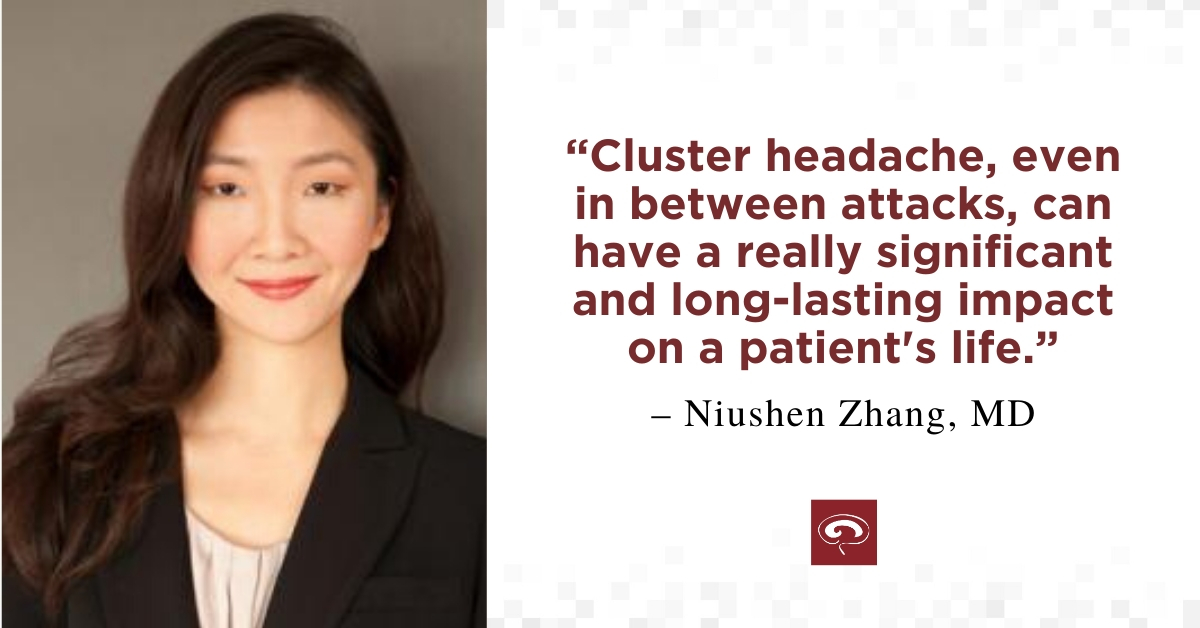
Cluster Headache Patients Experience Interictal Symptoms in Addition to Pain
Interictal burden impacts patient lives – even between attacks.
According to a new study published in Headache®, patients who live with cluster headache—characterized by excruciatingly painful attacks lasting 15-180 minutes — experience ongoing symptoms even between attacks.
In the paper, the authors identify different types of interictal burden—issues that patients can experience in between each cluster attack. “There was avoidance of triggers which can impair what patients can do and want to do in their daily lives, and also reluctance to tell others about the disease, feeling that others may not understand their experience,” says Niushen Zhang, MD, a headache and facial pain specialist at Stanford Health Care, who commented on this study for the American Headache Society. “The authors’ big takehome was that people still experience these interictal symptoms, and there is a significant impact on their lives even between attacks.”
Methodology and Outcomes
Authors Heiko Pohl, MD, Andreas R. Gantenbein, MD, Peter S. Sandor, MD, and Jean Schoenen, MD, PhD based the study on the 2007 EUROLIGHT questionnaire, a survey of over 1,100 CH patients from 17 European countries. “Most studies measure the symptoms of an attack, and how much better they’re getting,” says Dr. Zhang. “This study looked at what’s happening between those attacks and found that there is a significant and long-lasting impact on a patient’s life.”
For instance, when asked to think about the last headache-free day, more than half the CH patients reported having not felt symptom-free. Two-thirds responded having been worried or anxious about their next attack, and about half of them reported having avoided “something” to prevent further headache attacks. Worrying about future attacks and avoiding potential triggers occurred independently from attack frequency and disease duration.
The study confirms what researchers like Dr. Zhang have suspected—that interictal burden contributes to the total burden of CH. “As someone who sees a lot of cluster headache patients, we know that it’s not just the attacks that affect their lives,” says Dr. Zhang. “The anxiety of not knowing when the next one is coming and having to plan their life around it, it really affects people. And, even between the painful attacks people still have symptoms where they experience soreness in the head or just don’t feel quite like themselves.”
Next Steps
The authors conclude that since the cumulative burden of CH might be irreversible, prevention strategies for the different types of interictal burden need to be developed. Zhang agrees that in order to do so, more studies in the future should focus on CH patients’ interictal state. “For example, if we were looking at a new medicine for cluster headache, instead of just measuring how much better the symptoms get during the painful attacks, are we also looking at how the medicine helps with interictal symptoms?”
Overall, she says, the paper delivers an important reminder to practitioners. “Cluster headache, even in between attacks, can have a really significant and long-lasting impact on a patient’s life.”
The American Headache Society takes pride in helping to advance research on headache and face pain. For more on the latest headache information and studies, visit the AHS News page.


